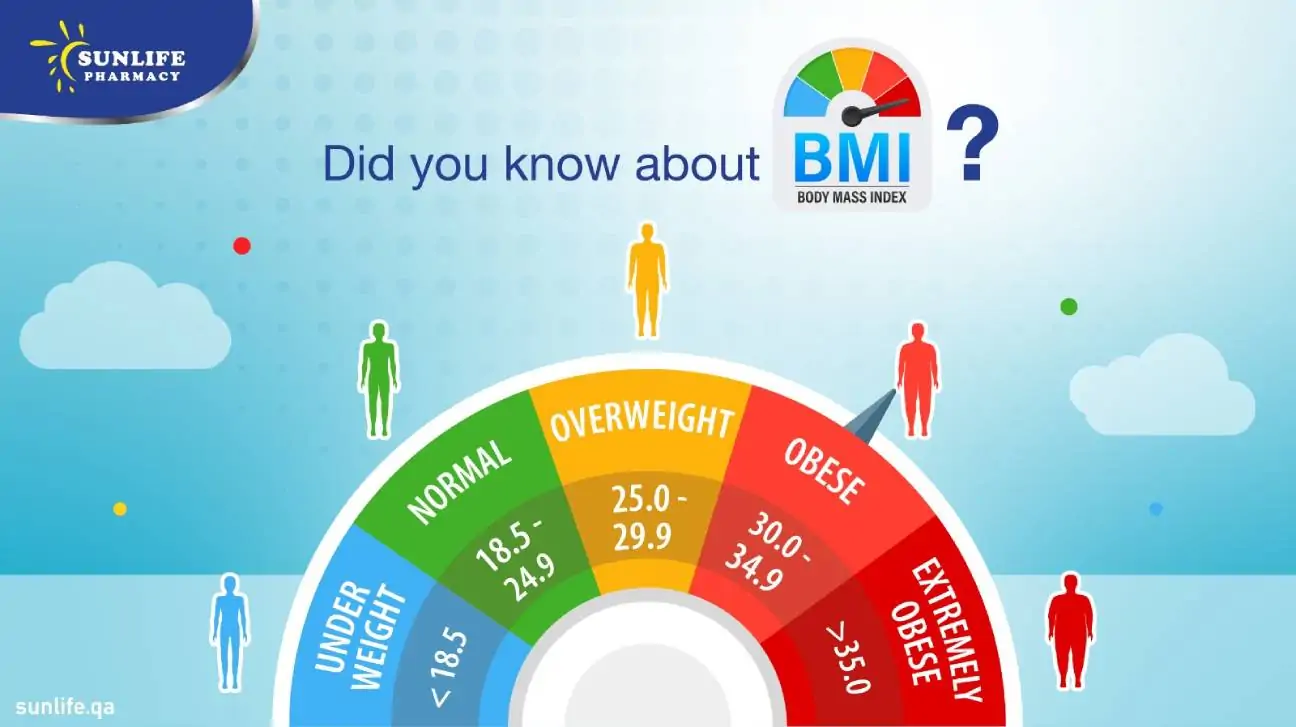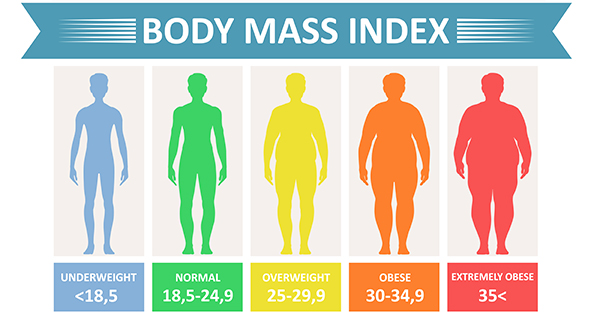Did you know about BMI

Body mass index, is used to determine a healthy body weight in relation to a specific height.
“When it comes to cancer risk, it’s important to know your BMI,” says Ann-Marie Hedberg, associate director of Clinical Nutrition at MD Anderson. “For some cancers there is a correlation between a high BMI and an increased risk.”
And while BMI is a common indicator, it’s not the only factor that should be considered.
“BMI doesn’t always tell the whole story,” Hedberg says.
Here’s what you should know about BMI.
Body Mass Index is a tool
BMI is a scale that can help determine if your weight is healthy in relation to your height. Your BMI is calculated by dividing your weight by the square of you height.
To find your BMI, simply use the chart below. Find your weight in pounds along the bottom and follow the chart to the spot where it meets your height in feet and inches. That number is your BMI.
For women and men, the following BMI ranges indicate your weight status:
- 18 or lower: underweight
- 18.5 to 24.9: normal, healthy weight
- 25 to 29.9: overweight
- 30 or higher: obese
Image 1 ( Related to mentioned below)

High BMI increases health problems
If you have a higher BMI, you’re more likely to have health problems like heart disease, stroke, diabetes, gallbladder disease, sleep apnea and osteoarthritis. Obesity also has been linked to an increased risk of several cancers, including esophageal, pancreatic, colorectal, breast, endometrial and kidney cancer.
BMI doesn’t tell the whole story
“It’s important to remember that BMI is just one factor in determining your overall health,” Hedberg says.
BMI should be considered along with other factors like blood lipid levels and blood pressure to determine if you’re in good health.
A high BMI doesn’t always mean you’re overweight. In fact, those with a very muscular build often have a high BMI, but not a high percentage of body fat.

Talk to your doctor, if you have a high (or low) BMI
How muscular you are: A few people have high BMIs but don’t have much body fat. Their muscle tissue pushes up their weight. An example: “A football player or a bodybuilder who is very muscular. Their BMI shows up pretty high, and yet their body fat is actually pretty low,” Kahan says.
Your activity level: Someone who is very inactive may have a BMI in the normal range and have lots of body fat, though they may not look out of shape.
“They have very low levels of muscle and bone — often elderly people, those in poor shape, sometimes those who are sick. Their BMI can look in the normal range, even though they have quite a lot of body fat in comparison to their lean body mass,” Kahan says. “Ultimately, they have similar risks as people who carry lots of body fat and have a high BMI.”
Your body type: Are you an apple shape or a pear shape? The location of your fat makes a difference to your health. Generally, it’s the belly fat, or the “apple” shape, that has a higher health risk. When fat settles around the waist instead of the hips, the chance of heart disease and type 2 diabetes goes up. Fat that builds up on the hips and thighs, or the “pear” shape, isn’t as potentially harmful.
Your age: The notion of an ideal BMI may shift with age. “People who are older probably should have a little more fat on them, [but] they shouldn’t have a BMI of 30,” Atkinson says.
He points out that late in life, people who are “a little bit overweight” tend to have a better survival rate than leaner people. The reasons for that aren’t totally clear, but it may have to do with having reserves to draw on when fighting off an illness. It’s hard to tell for sure, since many things affect your health.
Your ethnicity: There are a lot of differences in BMI and health risk among ethnic groups. For example, Asian-Americans tend to develop health risks, including the risk of diabetes, at lower BMIs than whites. A healthy BMI for Asians ranges from 18.5 to 23.9, a full point lower than the standard range. And Asians are considered obese at a BMI of 27 or higher, compared to the standard BMI obesity measure of 30 or higher.
People of Indian descent face higher health risks at relatively lower BMIs, Atkinson says. “The standard definition of overweight is a BMI of 25 or above. But if you’re from India, your risk of diabetes starts going up with a BMI of about 21 or 22.”
In contrast, many African-Americans may have a high BMI, but without the health risks that usually go along with it. Compared to whites with the same weight and BMI, African-Americans tend to have less visceral fat (fat around their organs) and more muscle mass, Atkinson says. Therefore, an African-American with a BMI of 28, which the standard chart calls overweight, might be as healthy as a white person with a BMI of 25.
BMI and Weight Supplements
So what other tools can you use besides BMI? You may want to get out your measuring tape.
Waist size: For an accurate measurement, the tape measure should go around your waist at the top of your hip bones in your lower back and go around to the belly button.
To help prevent health problems from being overweight, men should keep their waist size to no more than 40 inches. Women should stick to no more than 35 inches. Again, there are some ethnic differences. Asian men should keep their waists no more than 35.5 inches and Asian women to no more than 31.5 inches, according to the Joslin Diabetes Center.
Waist-to-height ratio: This compares your waist measurement to your height. It may be even more helpful than waist circumference alone, Kahan says. The goal is for your waist circumference to be less than half of your height.
Other ways to measure body fat that may be more accurate than using BMI alone include the waist-to-hip circumference, skinfold thickness measurement, and ultrasound. Your doctor can help decide if these further tests may be needed.
References:


